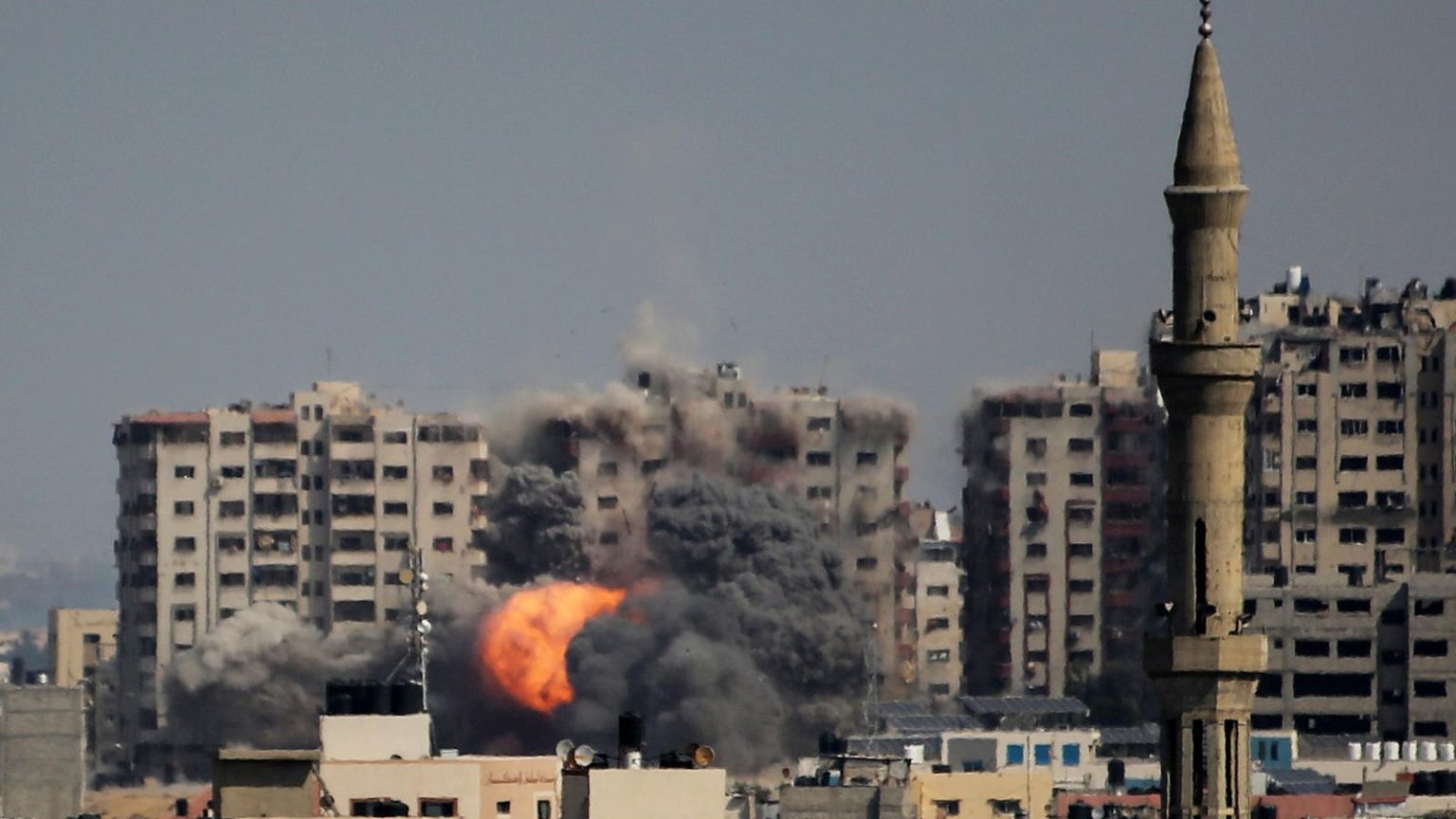Israel’s order for approximately 1.1 million Gazans to relocate from the north of the narrow coastal strip to the south suggests it is planning to establish a substantive buffer zone around the enclave and tighten what already amounts to an unprecedented siege.
The Israeli military warned the UN Office of the Coordination of Humanitarian Affairs and the Department of Safety and Security in Gaza that the entire Palestinian population north of Wadi Gaza should relocate to the south within a mere 24 hours.
The UN warned in a statement that fulfilling that order is “impossible” without incurring “devastating humanitarian consequences.” It called on Israel to rescind it to avoid turning a “tragedy into a calamitous situation.”
Even the White House, which has so far expressed full support for Israel’s targeting of Hamas in response to the heinous terrorist attacks that killed 1,300 Israelis on October 7, described it as a “tall order.” White House security spokesperson John Kirby said the order calls for “a lot of people to move in a very short period of time,” Reuters reported.
About half of the enclave’s overall population of 2.2 million live north of Wadi Gaza, where Gaza City, with its pre-war population estimated to number just under 600,000, sits.
It’s unlikely that all civilians in Northern Gaza can flee in this narrow timeframe, even if they chose to. Nevertheless, there were already reports of Palestinians leaving their homes on Friday. Others are staying put, reluctant to abandon their homes and relocate to a part of the strip with even fewer resources.
The death toll in Gaza also reportedly surged to 1,799 people, approximately a third of whom were children, on Friday. An estimated 7,000 have also suffered injuries, according to Gaza’s health ministry. The UN separately estimated on Thursday that Israeli strikes displaced 423,000 Gazans.
In his remarks, Kirby went from calling Israel’s relocation order a tall one to affirming the U.S. understands Israel is trying “to isolate the civilian population from Hamas, which is their real target.”
If most of the civilians in Gaza City flee south, Israel could subject the city to a saturation bombing campaign. Israel has already dropped approximately 6,000 bombs on the enclave, according to its air force. Many suspect the airstrikes are a prelude to a large-scale ground campaign, with Israel amassing a record 360,000 reservists around Gaza.
If Israel does not rescind its relocation order, which isn’t likely, it might extend it if substantial numbers of civilians remain in place after the looming deadline expires.
There is also the strong possibility that even if a significant number of Palestinians attempt to relocate, Hamas will prevent them, knowing full well that fewer civilians in Gaza City will increase the likelihood of even heavier bombardments. The group has predictably urged Palestinians to ignore the order, denouncing it as “psychological warfare.”
In late 2016, as Iraq got ready to launch its large-scale ground operation against Islamic State militants occupying its second city, Mosul, it planned to permit civilians and ISIS militants to evacuate from the west side, potentially avoiding costly urban battles. They intended to do this by surrounding the city from the south, east, and north, but leave its western side open. Any ISIS militants who chose to evacuate would have been hunted down and killed in less densely populated areas in Iraq or Syria at a later date.
However, Iran opposed this “horseshoe” formation and had its proxy militias block the entrance to western Mosul, ensuring there would be no escape. ISIS fought in the west of the city for seven months in a costly urban campaign, claiming many civilian lives and devastating large swathes of the city.
Drawing a clear line with Wadi Gaza, Israel may similarly hope the bulk of the civilian population flees southward and gives it a freer hand to target Hamas in the north. However, this is not likely, especially in such a limited timeframe.
The United States is in talks with Israel and Egypt over creating a safe passage for evacuating foreign nationals from Gaza, including UN and non-governmental organization workers and journalists. Egypt has kept its side of the Rafah border crossing between Gaza and its Sinai region open and has called on countries and aid organizations to send aid to Gaza through Sinai’s El-Arish airport. Israel has bombed Rafah and is refusing any assistance for Gaza.
Israel may facilitate humanitarian aid deliveries to El-Arish through Rafah, but probably only after establishing some strategic victory against Hamas, such as capturing Gaza City and dismantling Hamas infrastructure and arms caches there. It may also seize the Gaza side of Rafah before permitting any aid to beleaguered Palestinians.
While Egypt stands ready to facilitate the delivery of humanitarian aid to Gaza’s civilians, it doesn’t want to admit any Palestinian refugees. Israel would also not welcome the prospect of Hamas militants escaping to Sinai by embedding themselves among civilian refugees, as exemplified by Prime Minister Benjamin Netanyahu’s recent declaration that every Hamas member is “a dead man.”
What happens after this crucial 24 hours is anyone’s guess. But in the coming days and weeks, possibly even months, more Gazans will likely face internal displacement in the already overcrowded strip. When Israel launches a ground campaign, Palestinians will probably find themselves confined to an even smaller enclave within an enclave, separated from Israeli and possibly Egyptian borders and wholly cut off from the outside world.
Read the full article here





